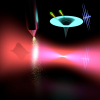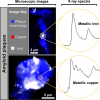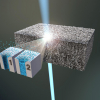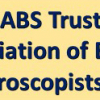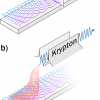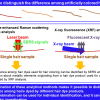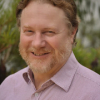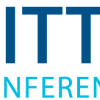X-ray Spectrometry News
For the first time, researchers have studied the behaviour of a catalyst for water electrolysis at the atomic level.
Shimadzu has appointed Jürgen Semmler as the new Managing Director of its European organisation. He previously headed Shimadzu Deutschland since its foundation in 2006.
Using portable X-ray fluorescence (XRF) spectroscopy, researchers have discovered that a glass panel at Canterbury Cathedral, UK, contained within a series of windows depicting the Ancestors of Christ, was much older than originally thought, with glass dating back to 1130–1160.
An international team of researchers has demonstrated a new concept for the generation of intense extreme-ultraviolet radiation by high-harmonic generation which enables a much smaller footprint.
Work at the Diamond synchrotron has found a way to help reduce false-negative results in lateral flow tests by a simple modification.
An international team of researchers has discovered elemental metallic copper and iron in the human brain for the first time.
Hitachi High-Tech Analytical Science has opened a new 4118 m2, high-tech manufacturing facility in Shanghai, China.
The Talbot effect has been used to create an interference pattern with hard X-ray beams at a sub-nanometre wavelength (0.17 nm) enabling the study of nanoscale transport phenomena.
Battery electrodes, storage devices for gases and some catalyst materials have tiny functional pores that can accommodate atoms, ions and molecules. Anomalous small-angle X-ray scattering and X-ray absorption near-edge structure spectroscopy can show how the pores fill.
The Geological Survey of Finland will be using the Epsilon Xflow X-ray fluorescence instrument from Malvern Panalytical to analyse the chemical composition of mine liquids in real-time.
Multi-spectroscopy analytical approach provides important information for preservation of Picasso paintings.
X-ray photon correlation spectroscopy has been used to reveal the protein dynamics in egg white as it is heated.
Study at FLASH with femtosecond time-resolved X-ray photoemission spectroscopy (TR-XPS) provides better understanding of novel photovoltaic and photocatalytic frameworks.
Applications are invited for two awards administered by the ABS Trust.
Researchers have developed a method to modify the spectral width of extreme-ultraviolet light. By employing a novel phase-matching scheme in four-wave mixing, they can compress the spectral width of the initial broadband light by more than hundred times.
Scientists at Tokyo University of Science have combined SERS and XRF to distinguish between differently dyed individual hair strands for forensic investigations.
Professor Peter Lay from the University of Sydney has been awarded the Australian Synchrotron Lifetime Contribution Award by ANSTO, the Australian Nuclear Science and Technology Organisation.




